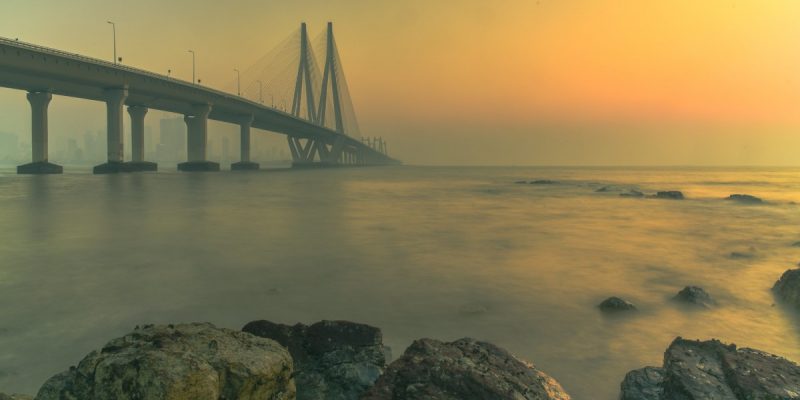In December 2015, the Ministry of Environment, Forest and Climate Change (MoEFCC) made an amendment to the coastal regulation zone (CRZ) laws which govern activities and development in coastal areas. The amendments allowed, for the first time, construction of roads by way of reclamation (creating new land from oceans, rivers or lakes by filling the area with rock, sand etc) anywhere along India’s 7,500 km-long coastline without any environmental clearance, albeit in “exceptional cases” the definition of which was left undefined.
The amendment, which came as a result of an unprecedented recommendation from the Maharashtra Coastal Zone Management Authority (MCZMA), effectively nullifies several laws and regulations – the original CRZ notification which was issued in 1991 under the Environment Protection Act, 1986, as well as the Wild Life (Protection) Act, 1972.
It also ignores the eco-sensitive nature of the intertidal zone. Land-filling, unquestionably, desecrates fragile coastal ecosystems; it destroys coral reefs and crucial fish spawning grounds and disrupts marine food chains, which in turn impacts adversely the local fishery communities and economies dependent on them. Additionally, it creates a dam between the city and the water body, affecting natural storm-water drainage patterns and increasing the threat of flooding manifold.
Also Read: Human Activity Accelerates Erosion Along India’s Eastern Coast
Five years on, however, despite receiving severe criticism from environmentalists and being challenged in the Supreme Court, the ill-conceived amendment lives on. Municipal corporations looking to develop infrastructure have lapped up this relatively easier solution – coastal lands are not privately-owned – and several projects are in the works across the country today. Daman has a brand new coastal highway while the Brihanmumbai Municipal Corporation’s (BMC) Rs 12,700-crore ‘coastal road’ in Mumbai, the project which inadvertently birthed the amendment, continues to progress unabated. There are “exceptional cases” galore, it appears.
The amendment’s far-reaching effects are becoming increasingly and swiftly apparent – our coasts have been reduced to a playground for commercial real estate development with blatant disregard for the environment. For instance, under just the first phase of the project in Mumbai, a barely 10 km-long coastal road from Marine Drive to Worli, the BMC is reclaiming an estimated 90 hectares of land from the Arabian Sea – while it needs barely 20 – and has translocated entire coral colonies (Schedule I protected species), an exercise that has been questioned by marine biologists. What kind of precedent are we setting for urban development in the country?

Proposal for the Mumbai Coastal Road project.
Are we designing for people, or cars?
These projects also point to a larger problem that continues to plague development thinking in India today: an overinvestment in creating infrastructure for cars – a vestige, no doubt, of industrial and post-industrial urban planning models from the West.
In most Indian cities, private cars account for a minimal percentage of daily trips despite their high vehicular share, with an overwhelming majority of people using public transport or walking as a means of mobility. Such car-oriented development models, therefore, take away both investment and space from mass-transit modes such as buses and railways, and non-motorised private-transit modes like cycling and walking, as well as from the creation of green and open spaces.
The BMC project to build this coastal road is an abject waste of public money in a city where over 70% of the population walks to work or uses public transport and less than 10% uses private vehicles.
Imagine, instead, if the Rs 12,700 crores earmarked for the coastal road, the most expensive road per kilometre in India, were redirected instead to Mumbai’s public transit system – building an underground metro network, reinforcing the BEST bus fleet, and repairing and widening footpaths for pedestrians?
Ideally, all our cities and towns should be more walkable. We need to work on developing high-density, mixed-use neighbourhoods where one could access all essentials within a 500-metre radius from the doorstep: self-sufficient units with all public facilities and amenities available locally – from schools and hospitals to gardens to spaces for weekly farmer markets and waste segregation and recycling; units that could be administered with ease and where inhabitants would be able to walk or cycle to work, to school, to shop, and to play. Such ‘smart neighbourhoods’ would reduce travel times and the need for regular inter-neighbourhood journeys, and, in addition, the high levels of carbon emissions and pollution in our cities today.
Also Read: The New Coastal Law Sets an Unethical Precedent in Policy Making
They would also ensure optimisation of resources and services, effective costing, and reduce wastage. Paris is already testing this idea and working on becoming a “15-minute city” by creating cycle lanes and discouraging car use by taking off over 60,000 on-street parking spots and replacing them with green space and playgrounds instead. So are Melbourne and Milan.
We can also look to history for examples. In the 1990s and early 2000s, Boston buried into tunnels a freeway it had erected along its coast in the 50s, reclaiming the space for the city and its people in the form of public spaces and gardens. The mistake that the American city made in the last century, we seem to be making now. Let us ensure that our coasts don’t become thoroughfares but remain destinations – gentle and quiet places to reflect, engage, and be with nature.
Rahul Kadri is the principal architect at IMK Architects, an architecture and urban design practice founded in 1957. He holds a graduate diploma in architecture from the Academy of Architecture, Mumbai, and a master’s in urban and regional planning from the University of Michigan, the US.

